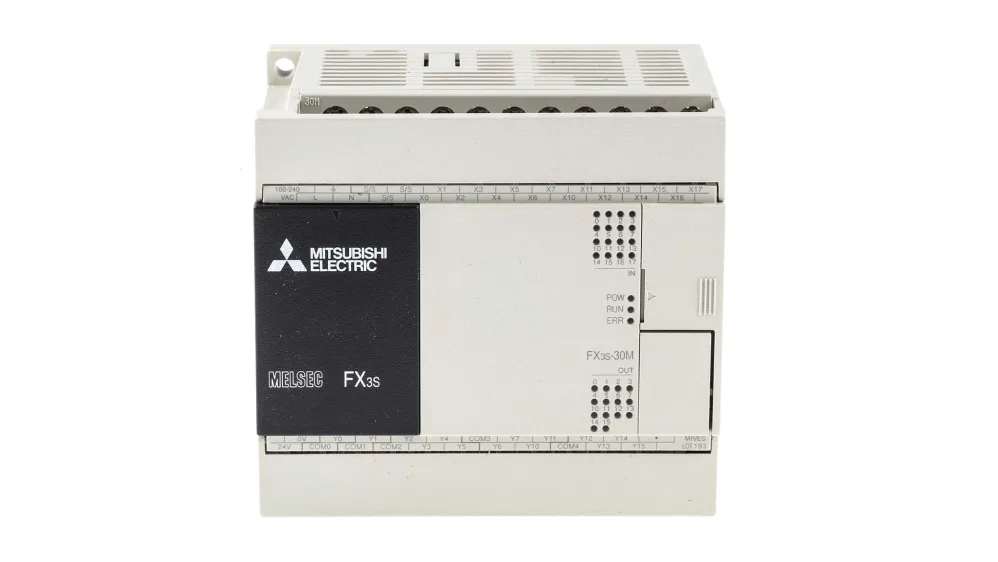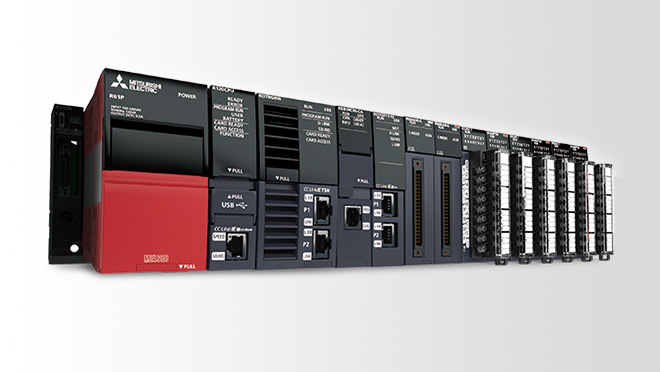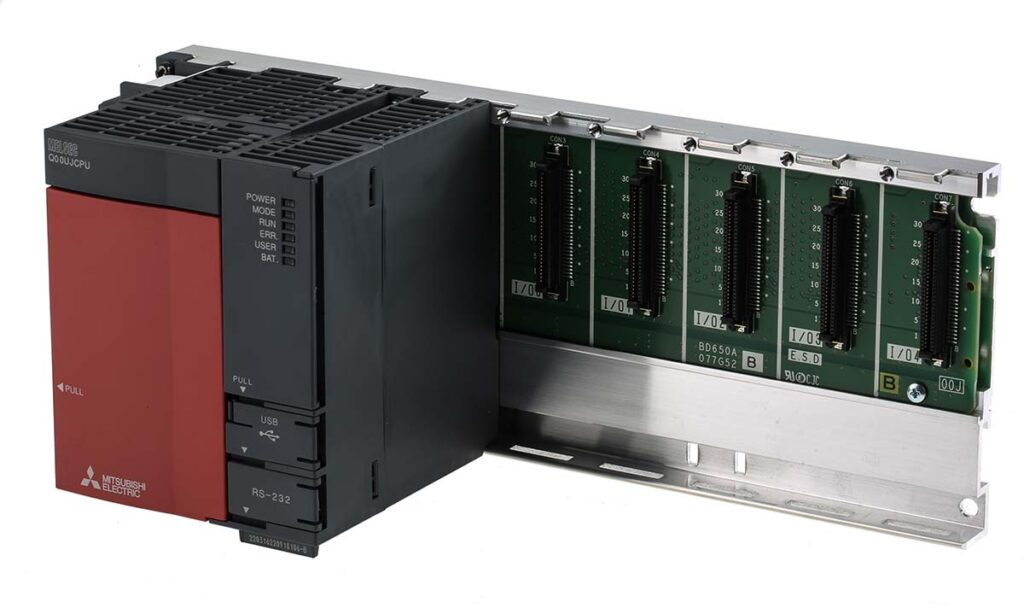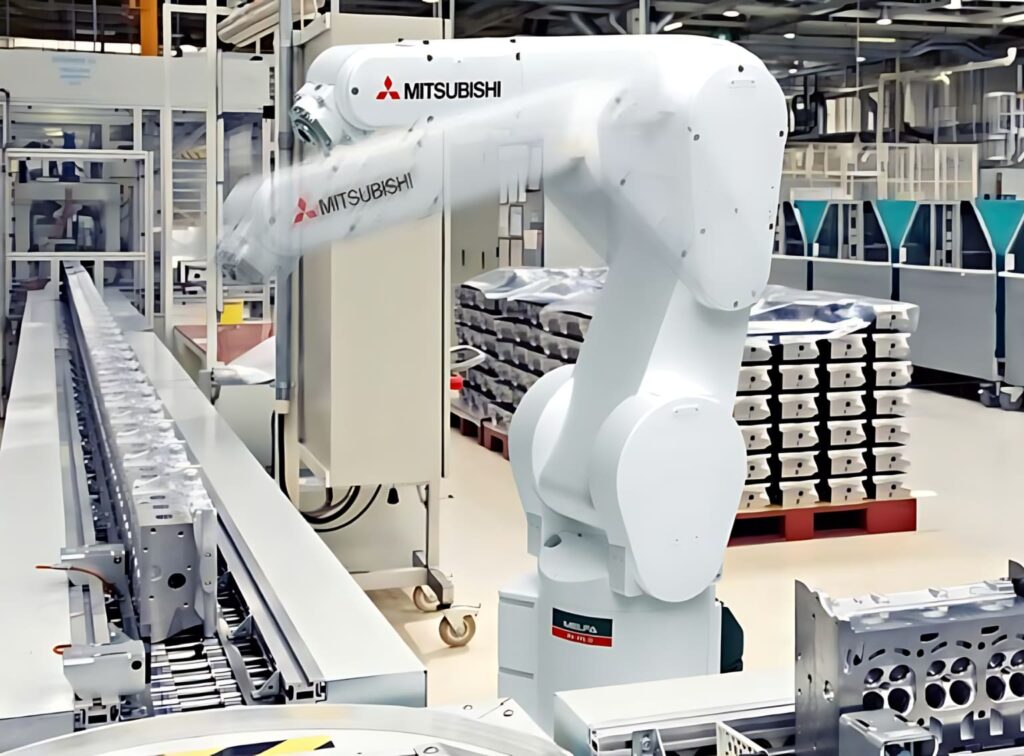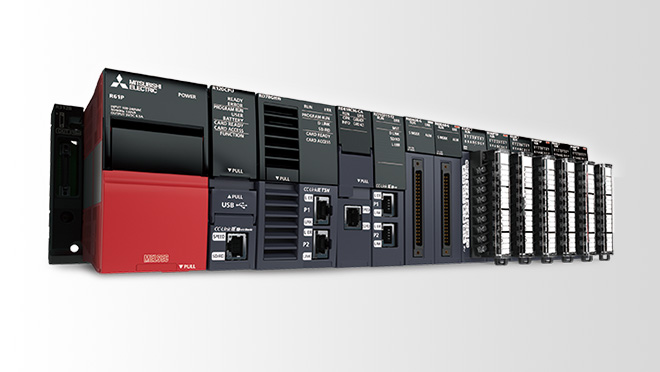
31
Compact vs Modular PLCs: Which is Right for You?
Understanding PLCs: A Brief Overview
What is a PLC?
A Programmable Logic Controller (PLC) is a rugged, industrial-grade digital computer designed to automate electromechanical processes. These devices are commonly found in manufacturing plants, packaging lines, and industrial machines—essentially anywhere reliable and repeatable automation is required.
PLCs monitor inputs, make logic-based decisions, and control outputs in real-time. They’re built to withstand harsh environments and deliver consistent performance. For example, a Mitsubishi PLC can seamlessly manage tasks like conveyor belt sequencing, safety interlocks, or temperature control in a factory setting. Modern PLCs, like the Mitsubishi FX5U series, offer high-speed processing, advanced networking capabilities, and easy integration with SCADA systems—making them a core component in industrial automation and machine control systems. PLCs for Safety Monitoring are also available, with greater redundancy and internal monitoring.
Key Differences between Compact and Modular PLCs
When selecting a PLC, one of the first decisions you’ll face is whether to go with a compact or modular design. Both types have distinct advantages depending on the size and complexity of the application. Compact PLCs, like the Mitsubishi FX3S and FX5U, combine the CPU, power supply, and I/O into one unit. This design suits small machines and standalone systems, keeping installation simple. Modular PLCs, such as the Mitsubishi Q-Series, allow for more flexibility. Components are separated—CPUs, I/O modules, and communication interfaces can be configured independently. These systems are ideal for large-scale or evolving applications requiring high-speed data processing and extensive I/O.
Advantages of Compact PLCs
Compact PLCs integrate core components into one housing, reducing wiring and simplifying installation. The Mitsubishi FX5U combines efficient processing with built-in I/O, making it ideal for OEMs looking to save time on setup.
In tight control panels, space-saving is crucial. Compact PLCs like the FX3S offer solid performance in small enclosures, making them well-suited for compact machines and decentralized systems.
Compact PLCs reduce hardware and installation costs. With fewer components to buy and simpler setup, models like the FX5U offer a cost-efficient automation solution without sacrificing essential functionality.
Compact PLCs are best for applications that don’t require a high number of I/O or complex networking. The FX5U and FX3G support fast processing, analog I/O, and Ethernet communication—enough for motor control, sensor monitoring, and basic automation needs.
Compact PLCs integrate core components into one housing, reducing wiring and simplifying installation. The Mitsubishi FX5U combines efficient processing with built-in I/O, making it ideal for OEMs looking to save time on setup.
Limitations of Compact PLCs
Limited Scalability
Compact PLCs can be restrictive when projects expand. Their fixed architecture limits how much I/O or functionality can be added. While models like the FX5U allow for some expansion, more complex systems may require transitioning to a modular platform like the Mitsubishi Q-Series.
Fewer I/O Options
These PLCs typically offer a fixed number of inputs and outputs, with limited expansion capabilities. For high-density or specialized I/O applications, modular Mitsubishi PLCs provide a broader range of options.
Reduced Customization Opportunities
Compact PLCs support fewer customization features compared to modular systems. While the FX5U handles basic communication, more advanced integration—such as multi-network communication or motion control—is better suited to modular systems like the iQ-R Series.
Advantages of Modular PLCs
Flexibility and Scalability
Modular PLCs allow users to build systems tailored to specific requirements. The Mitsubishi Q-Series provides flexibility to add or remove I/O, CPUs, and communication modules as the system evolves. This makes them ideal for operations with future expansion in mind.
High Capacity for I/O
Large systems demand many I/O points. Modular PLCs can handle thousands of I/O connections. The Mitsubishi iQ-R Series excels in managing complex systems, offering real-time control, high-speed networking, and extensive I/O support.
Customizable and Configurable Modules
Modular PLCs support advanced configurations, including safety modules, motion control, and multiple communication networks. The Q-Series supports CC-Link, Ethernet/IP, and Profibus, allowing seamless integration across diverse systems.
Ease of Expansion and Upgrade
These PLCs are built to grow. Facilities using Mitsubishi modular PLCs can start small and expand by adding analog modules, motion cards, or redundant CPUs—without needing to redesign the whole system.
Limitations of Modular PLCs
Higher Initial Costs
Each modular component must be purchased separately. A Q-Series system might require a CPU, power supply, and multiple I/O cards, making it less cost-effective for small-scale tasks. However, this cost is often justified by long-term flexibility and performance.
Complex Installation
Modular PLCs require more planning and setup. Each module must be properly selected, installed, and configured. For instance, a Mitsubishi iQ-R Series setup may need skilled engineers to ensure compatibility and optimize system performance.
Requires More Space
A modular design takes up more physical space due to the separate components. Mitsubishi FX5U using the Q-Series or iQ-R must be designed with enough room for racks, cabling, and future expansion.
Comparing Performance and Reliability
Impact on Downtime and Maintenance
PLCs must perform consistently to prevent costly downtime. Models like the Mitsubishi FX5U offer built-in diagnostics and remote monitoring to catch issues early. In more advanced systems, the iQ-R Series includes redundancy features that maintain operations during hardware failures, reducing the risk of unexpected downtime.
Fault Detection Capabilities
Modern Mitsubishi PLCs are equipped with powerful diagnostic tools. The Q-Series and iQ-R Series support error logging, real-time alerts, and status flags. Even compact models like the FX3G feature self-diagnostics for CPU health and I/O monitoring, allowing for faster troubleshooting and reduced downtime.
Application Suitability
Industrial and Commercial Use Cases
PLCs are used in manufacturing, energy, food processing, and commercial automation. The Mitsubishi FX5U suits applications like conveyor control and packaging lines, while modular systems like the Q-Series are ideal for process control, automotive production, and power systems. Their support for industrial protocols ensures smooth integration across diverse environments.
Matching PLC Type with Project Size
Project size plays a key role in PLC selection. For compact machines or basic automation, the FX3S or FX5U provide all-in-one solutions. For multi-phase projects, integrated lines, or distributed control systems, modular PLCs like the iQ-R Series offer the processing power and configurability needed to scale effectively.
Environmental and Operational Considerations
Effects of Operational Environment
PLCs often operate in environments with extreme temperatures, dust, vibration, and electrical interference. Mitsubishi PLCs are engineered for such challenges. Models like the FX5U and Q-Series are built with rugged enclosures and noise-resistant circuitry, ensuring reliable performance in harsh conditions. In commercial or cleanroom environments, compact PLCs remain stable with minimal maintenance. However, proper installation—such as enclosure sealing, cooling, and grounding—is crucial for any setting to preserve long-term performance and system integrity.
Other Available Automation Products
In addition to Programmable Logic Controllers, other Automation components serve as powerful tools for enhancing productivity across industrial environments.
For example, light curtains for measurement are available, along with a wide selection of encoders for monitoring machine position. These include absolute encoders, incremental encoders, magnetic encoders, and rotary encoder types, all of which contribute to precise and reliable automation. When paired with compatible motors, variable speed drives offer enhanced motor control, increasing the value of encoder feedback. For even greater precision, servo motors and servo amplifiers are also available, supporting applications that demand accurate motor positioning.
Human-machine interaction is enabled through a full range of operator interface components, including selector switches, HMI touch panels, handheld pendants, industrial-grade pushbuttons, panel mounts, and relevant accessories. Monitoring of electrical circuit performance is supported by devices such as power relays, speed monitors, insulation monitors, current monitors, battery monitors, phase sequence relays, voltage monitoring relays, and undercurrent relays. Additional core components include power supplies and residual current transformer units. EV charging solutions are also available within this category.
Supporting both automation and safety systems is a robust offering of cables and connectors. This includes straight cables, angled cables, and multipole connectors such as REVOS and RST. For secure integration into control panels, Selos terminals are recommended. A complete range of plugs, sockets, inlets, flanges, couplers, and enclosures are also stocked to accommodate diverse industrial applications.

